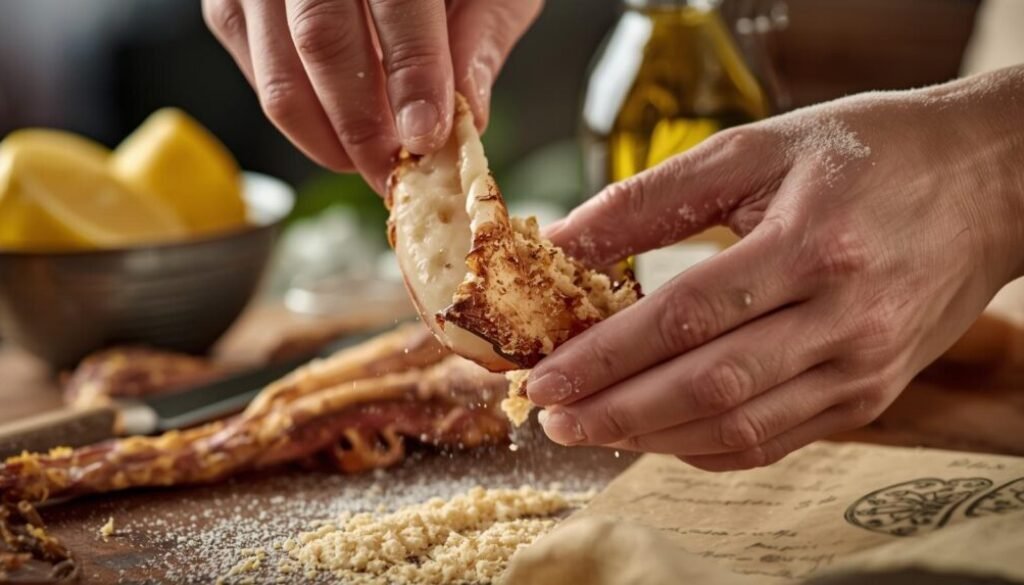Calamariere: History, Meaning, and Culinary Significance
Introduction
The word calamariere is not one you hear every day, yet it carries layers of cultural, linguistic, and culinary significance. Rooted in the Italian word calamaro (squid), the term refers not only to the preparation of squid dishes but also connects to the world of ink, manuscripts, and creativity. Today, calamariere serves as a fascinating reminder of how a single word can bridge food, history, and language.
This article dives deep into the meaning of calamariere, tracing its origins, exploring its role in gastronomy, examining its symbolic value in literature, and highlighting how it remains relevant in modern contexts.
The Origins and Etymology of Calamariere
The origins of calamariere lie in the Italian language, where calamaro means squid. The suffix -iere typically indicates a person or tool associated with a particular task. Thus, calamariere could be interpreted as:
- A person who prepares squid dishes.
- A tool or utensil related to squid, seafood, or ink.
Historically, squid were more than just a food source. Their ink was also used as a natural dye and as writing ink in manuscripts, especially during the Middle Ages and Renaissance. Because of this, the word calamariere straddled two worlds: the kitchen and the scriptorium.
Calamariere in Culinary Traditions
Squid in Mediterranean Cuisine
In regions like Italy, Spain, and Greece, squid is a culinary staple. The preparation of squid is considered an art form, requiring skill to balance tenderness and flavor. A calamariere—in the culinary sense—would be someone who specializes in crafting squid-based dishes.
Popular Squid Dishes
- Fried Calamari (Calamari Fritti): Perhaps the most famous squid dish, featuring lightly battered rings fried until golden and crispy.
- Stuffed Calamari (Calamari Ripieni): Squid tubes filled with breadcrumbs, garlic, herbs, and sometimes seafood or sausage.
- Squid Ink Pasta: Known for its striking black color, this dish uses the squid’s ink for a salty, ocean-inspired flavor.
- Grilled Squid: A healthier option that highlights the natural tenderness of fresh squid.
A calamariere in this context might be compared to a seafood master chef—someone who understands the texture, timing, and seasoning that make squid dishes so loved.
The Symbolic and Literary Connection
Squid Ink as a Writing Tool
Squid ink was used in ancient and medieval times as a natural form of ink. Scribes valued it for its durability and deep color, using it to record knowledge in manuscripts and letters. In this way, a calamariere could also refer metaphorically to a scribe, a writer, or anyone who works with ink.
Symbolism of Calamariere
In literature and culture, calamariere came to represent:
- Creativity: The ink of the squid as a symbol of artistic expression.
- Knowledge: The preservation of wisdom in manuscripts.
- Connection between nature and art: Showing how natural resources like squid ink contributed to human culture.
Calamariere in Modern Times
Although calamariere is not a commonly used term today, it still surfaces in different contexts:
In Gastronomy
Some seafood restaurants adopt the term calamariere to highlight their expertise in preparing squid and other seafood. It evokes authenticity and Mediterranean tradition, making it appealing in culinary branding.
In Literature and Art
Writers and poets sometimes use calamariere to describe ink, writing, or creativity itself. It carries an old-world charm, linking the present to centuries of artistic tradition.
In Cultural Heritage
Calamariere embodies Mediterranean identity—where food, art, and language merge. By using the term, people pay homage to traditions that celebrate both the richness of cuisine and the value of cultural memory.
The Culinary Expertise of a Calamariere
Being a calamariere in the kitchen is not simply about cooking squid; it’s about mastering the delicate balance of flavors and techniques. Squid can quickly become rubbery if overcooked, which is why skill is essential.
Skills of a Calamariere Chef
- Knowledge of seafood preparation: Cleaning, slicing, and marinating squid properly.
- Cooking techniques: Knowing when to fry, grill, or stew for the best texture.
- Flavor pairing: Combining squid with garlic, lemon, chili, or pasta for authentic Mediterranean flavor.
- Presentation: Serving squid dishes in visually appealing and appetizing ways.
These skills ensure that calamariere dishes not only taste excellent but also showcase the cultural artistry behind them.
Frequently Asked Questions About Calamariere
1. What does calamariere mean?
Calamariere comes from the Italian word calamaro (squid) and can refer to someone who prepares squid dishes or to the symbolic use of squid ink in writing.
2. Is calamariere used in modern Italian?
It is not a common everyday word but may still appear in literary, cultural, or culinary contexts.
3. What is the link between calamariere and writing?
Squid ink was historically used as writing ink, so calamariere can also symbolize scribes, creativity, and artistic expression.
4. Can calamariere be a job title?
While not a formal title, some chefs or seafood experts could use it to describe their specialty in preparing squid.
Conclusion
The term calamariere is a rich blend of language, food, and culture. Rooted in the Mediterranean tradition, it symbolizes both the culinary mastery of squid dishes and the creative legacy of squid ink in writing. While uncommon today, the word carries historical depth and modern curiosity, making it a fascinating topic for food lovers, cultural historians, and SEO enthusiasts alike.
Whether you encounter calamariere in a seafood restaurant, a poem, or a historical discussion, it reminds us of the deep connection between what we eat, what we create, and how language preserves heritage across generations.



